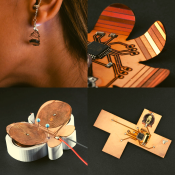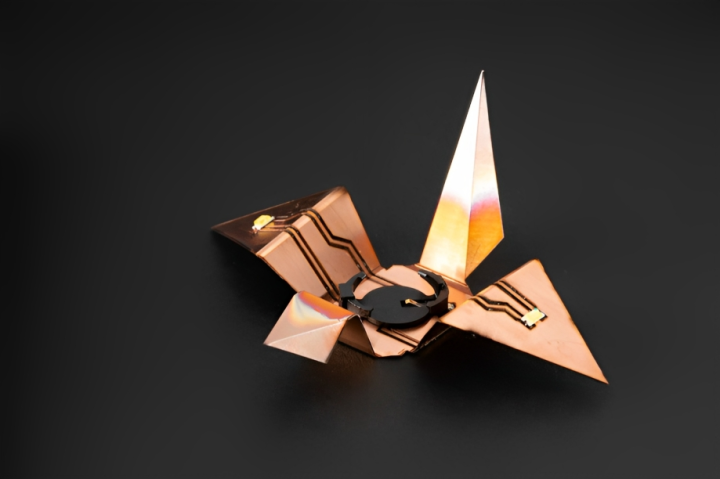UMD Computer Scientists Advance Circuit Design with Fibercuit
University of Maryland computer scientists received a 2023 Core77 Design Award in the Student Notable Tools category for Fibercuit, a suite of techniques to fabricate high-resolution flexible circuits suitable for rapid prototyping. The Core77 Design Awards annually celebrate the richness of the design profession as well as the insight and perseverance of its practitioners.
UMD computer science Ph.D. student Zeyu Yan and Assistant Professor Huaishu Peng focused on developing aesthetically pleasing and flexible custom circuit designs. The designs range from small flexible circuits to larger rigid ones folded into kirigami forms, the original Japanese art of folding and cutting paper into decorative shapes.
"It felt great to learn that our work was recognized by the design community,” Yan said. “As part of the Small Artifacts Lab, I have dedicated my time to technologies that promote the democratization and sustainability of hardware design and prototyping, including Fibercuit. Having our research well-received by designers and potentially becoming part of their toolkit is the ultimate goal, and I am pleased with this outcome."

Unique Fibercuit designs include an origami crane with illuminated LEDs powered by a coin cell battery, a miniature-scale earring dome formed by gravity and flexible traces, an elaborate circuit sunflower, and a stylish butterfly. This innovative approach to printed circuit board fabrication holds significant potential for the design community, providing expanded design possibilities and toolkits.
"We were inspired by specific trials in the early ’90s by Apple and Nintendo, creating devices like Gameboys and iPods with clear cases that showcased the beauty of the circuits inside," said Peng, who holds a joint appointment in the University of Maryland Institute for Advanced Computer Studies. "This inspired us to customize circuits for aesthetic purposes using a rapid prototyping method that allows us to make high-resolution circuits in our lab using a relatively low-cost machine."
The team developed various production techniques centered around a fiber laser cutter, a cost-effective version of industrial-grade engravers. By using a composite material substrate comprising a copper sheet and Kapton tape (wire and cable wrap), they achieved the desired circuit functionality. The laser cutter selectively removes the copper sheet to form circuit traces, and controlled laser settings allow for bending the circuits with varying thicknesses, resulting in unique finished products.
"The machine we're using is called a fiber laser engraver, which we use to trace our circuits and achieve the desired designs. Such lasers are commercially available machines, commonly used for engraving metal pieces. For example, at the Apple Store, personal signatures are engraved on the back of iPhones or iPads using the same technology," Peng explained. "After tracing the designs on our circuit, we proceed to a process called laser forming, which selectively distributes heat unevenly on the top and bottom of the copper, allowing it to bend at just the right angle, leaving perfectly placed designs."
The researchers first described Fibercuit in a paper at the ACM Symposium on User Interface Software and Technology in 2022 and received the People's Best Demo Award at that symposium.
—Story by Samuel Malede Zewdu, CS Communications
###
In addition to Huaishu and Yan, University of Chicago computer science graduate student Anup Sathya, George Mason University Alum Sahra Yusuf, and George Mason University Computer Science Associate Professor Jyh-Ming Lien, who serves as an advisor for Fibercuit, are also part of the project.
The Department welcomes comments, suggestions and corrections. Send email to editor [-at-] cs [dot] umd [dot] edu.
